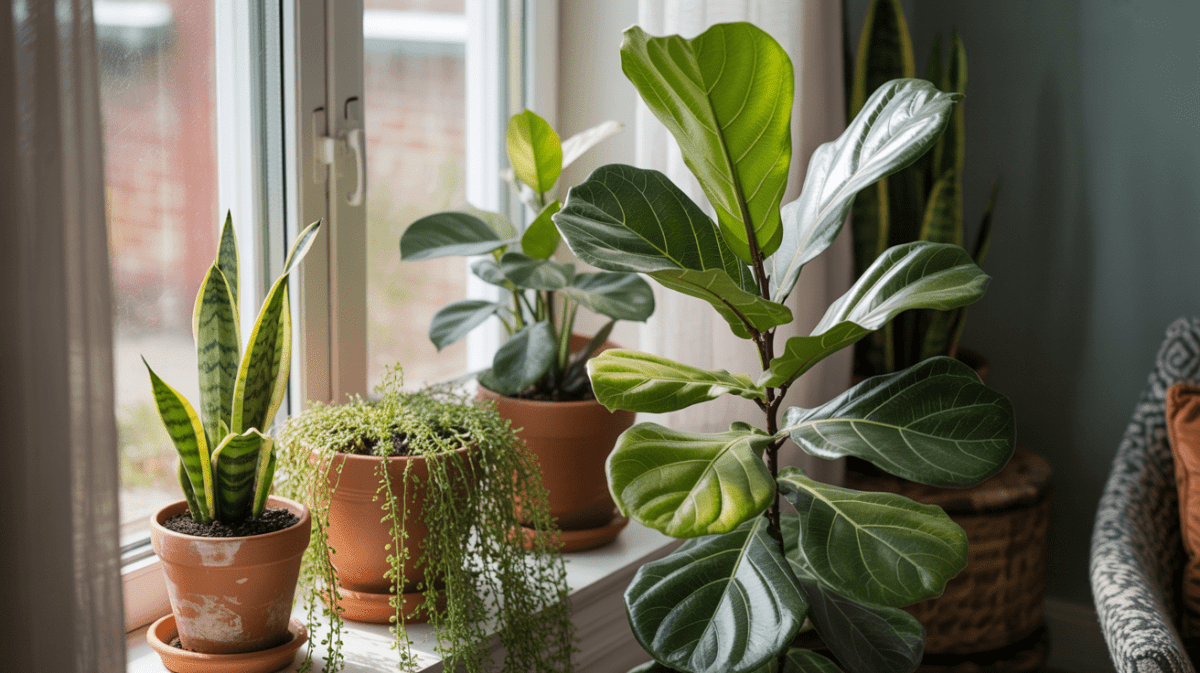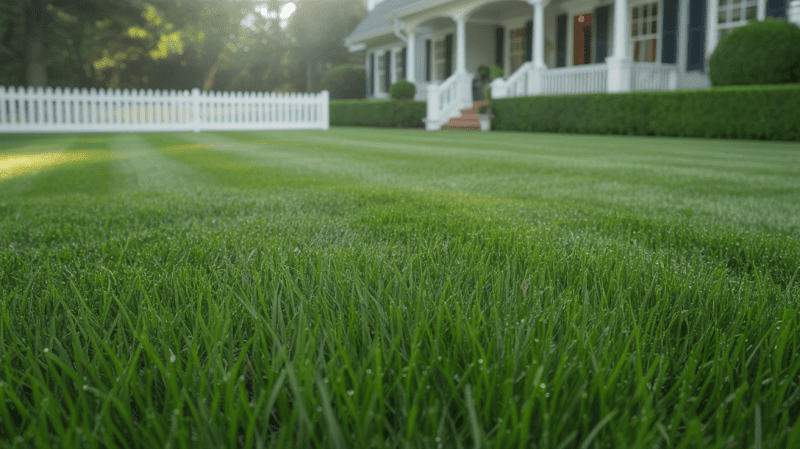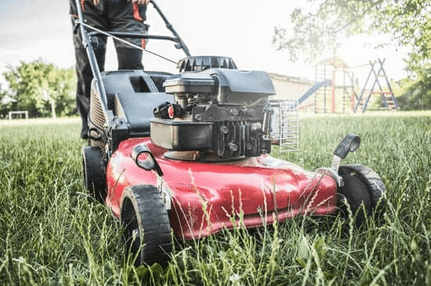Best plants that love the light from your north window:

I've learned to grow thriving plants in dark rooms, making every apartment feel like home. It's tough to grow plants in low light, but the right ones can make a big difference. You can bring greenery into your space with the right plants.
North-facing windows get less sunlight, which is tough for many plants. But, some species really thrive in these conditions. We'll look at some of the best options for plants that do well in low light and north-facing windows.
Understanding North-Facing Windows and Plant Needs
The often-overlooked north-facing window can be a great spot for plants that thrive in low-light conditions. To make the most of this space, it's essential to understand the unique conditions presented by north-facing windows.
Light Conditions in North-Facing Spaces
North-facing windows receive indirect sunlight, which is ideal for low-light plants. The light is typically softer and less intense, making it perfect for plants that can't tolerate direct sunlight.
Temperature and Humidity Considerations
Indoor rooms with north-facing windows tend to have more stable temperatures and humidity levels. Most houseplants prefer daytime temperatures between 65-75°F (18-24°C) and nighttime temperatures around 55-65°F (13-18°C). Maintaining a relative humidity between 40-60% is also beneficial.
| Condition | Ideal Range |
|---|---|
| Daytime Temperature | 65-75°F (18-24°C) |
| Nighttime Temperature | 55-65°F (13-18°C) |
| Relative Humidity | 40-60% |
Why Some Plants Thrive While Others Struggle
Plants that are adapted to low-light conditions tend to thrive in north-facing windows. On the other hand, plants that require direct sunlight may struggle. Understanding the plant's needs and matching them to the right environment is crucial.
Best Plants for Windows Facing North: My Top Picks
Some plants do great in the low light of north-facing windows. I've tried many to find the best ones.
Selection Criteria for North Window Plants
I look at light tolerance, watering needs, and hardiness when picking plants. Plants that thrive in low light and require minimal care are ideal.
How I Tested These Plants in My Own North-Facing Rooms
In my home, I've tested many plants. I've grown Phalaenopsis orchids, African violets, and ferns. I've also tried peace lilies, Syngonium, and Calathea. The results show which plants do best in north-facing rooms.
Benefits of Shade-Loving Indoor Plants
Shade-loving plants improve air quality and look great. They also create calm spaces, perfect for bedrooms and living rooms.
| Plant Type | Light Tolerance | Watering Needs |
|---|---|---|
| Ferns | Low | Frequent |
| Peace Lilies | Low to Medium | Moderate |
| Snake Plants | Low to High | Infrequent |
Choosing the right plants for your north-facing windows brings many benefits. You can enjoy indoor gardening even in low light.
Peace Lilies: Elegant Bloomers for Low Light
Peace lilies are perfect for adding calm to your home, even in dim light. Their white flowers and shiny leaves bring peace inside. They're a favorite for rooms with north-facing windows.
Care Requirements and Growth Patterns
Peace lilies are easy to care for. They need soil that drains well and should be watered until the soil is almost dry. Too much water can harm the roots. They can grow up to 6 feet tall, but usually stay 1-2 feet indoors.
Varieties Best Suited for North Windows
Some peace lilies do better in low light than others. The 'Sensation' variety has big leaves and grows well, perfect for north rooms. The 'Mauna Loa' variety is known for its beautiful white flowers and can handle low light well.
My Experience Growing Peace Lilies
Growing peace lilies has been a pleasure. They're very forgiving and can handle neglect and dim light. As Steve Frowd, a renowned horticulturist, once said,
"Peace lilies are not just beautiful; they're also great air purifiers, making them a wonderful addition to any home."
I've noticed a significant improvement in my home's air quality since adding peace lilies.
Snake Plants and ZZ Plants: The Virtually Indestructible Options

Snake plants and ZZ plants are top picks for north-facing windows. They love low light, making them great for rooms without direct sun.
Why These Plants Thrive in North-Facing Windows
These plants are made for low light. They can photosynthesize well even with little light. They have big leaves to catch as much light as they can.
Best Varieties for Low Light Conditions
For snake plants, Laurentii and Cylindrica are top picks. The ZZ plant's Zamiifolia variety is also great. Both are easy to care for and can handle neglect.
Maintenance Tips and Common Issues
ZZ plants can get dusty. Dust them every month, or more if they're in a busy spot. Snake plants are mostly pest-free but can get root rot if watered too much.
| Plant | Watering Needs | Lighting Tolerance |
|---|---|---|
| Snake Plant | Low to Medium | Low to Bright |
| ZZ Plant | Low | Low to Medium |
Pothos and Philodendrons: Trailing Beauties
In my experience, pothos and philodendrons do well in tough spots. They are great for north-facing windows.
Golden Pothos vs. Heart-Leaf Philodendron
Golden Pothos and Heart-Leaf Philodendron are both loved for their trailing looks. Golden Pothos has heart-shaped leaves with cool patterns. Heart-Leaf Philodendron has brighter, heart-shaped leaves.
Training and Displaying Trailing Plants
To get the most out of these trailing plants, train them to climb trellises. Or let them flow down from hanging baskets. This adds beauty and helps control their growth.
Propagation Methods for Endless Plants
Pothos and philodendrons are easy to spread. Just cut a stem, put it in water or soil, and wait for roots. This way, you can always have more of these low-maintenance plants.
Ferns and Calatheas for North-Facing Windows
Ferns and calatheas are perfect for adding a touch of nature to spaces with little light. They not only survive but also flourish in the conditions of north-facing windows. This brings a bit of the outdoors inside.
Boston Ferns, Bird's Nest Ferns, and Prayer Plants
Boston ferns and bird's nest ferns are loved for their lush leaves and low light tolerance. Prayer plants add a unique touch with their leaf patterns. It's key to mimic their natural habitat when caring for them.
Make sure ferns don't dry out but also avoid waterlogged soil. Water them carefully, avoiding direct water in the "nest" of bird's nest ferns.
Creating the Right Humidity Environment
Ferns and calatheas love humid air, making bathrooms or kitchens with north-facing windows great spots. To keep humidity right, group plants or use a humidifier.
| Plant | Humidity Requirement | Lighting Tolerance |
|---|---|---|
| Boston Fern | High | Low to Medium |
| Bird's Nest Fern | High | Low |
| Calathea | Medium to High | Low to Medium |
Troubleshooting Common Problems
Yellowing leaves often mean too much or too little water, and dry edges suggest low humidity. Adjusting your care can help your plants get better.
Knowing what ferns and calatheas need helps you enjoy their beauty in your north-facing windows for years.
Chinese Evergreens and Cast Iron Plants: Set-and-Forget Options
If you're looking for plants that can tolerate neglect and low light, consider Chinese Evergreens and Cast Iron Plants. These plants are known for their hardiness. They thrive in conditions that would be challenging for many other species.
Varieties That Thrive in Northern Exposure
Chinese Evergreens come in various cultivars, some with striking leaf patterns and colors. Cast Iron Plants are equally versatile. Some varieties feature strappy leaves that add a dramatic touch to any room.
Soil and Watering Requirements
Both plants prefer well-draining soil to prevent root rot. Watering should be infrequent, as these plants are adapted to survive with minimal moisture. Overwatering is a common mistake that can be detrimental.
Long-Term Care Strategies
To keep your Chinese Evergreens and Cast Iron Plants healthy, ensure they are not exposed to direct sunlight, which can cause scorching. According to Valeria Nyman, chief product officer at Taim.io, "The cast iron plant is virtually indestructible; north-facing windows provide just the right amount of indirect light for it to flourish." Regular dusting of leaves and occasional fertilization will also promote their well-being.
Unexpected Bloomers for North Windows

I've found that north-facing windows can support many beautiful blooming plants. Some plants can even thrive in low light. This adds color to these spaces.
African Violets and Their Care
African violets are perfect for north-facing windows. They require minimal care and bloom throughout the year with the right water and food. Keep their temperature and humidity steady.
As an expert says, "African violets hate extreme temperatures. So, keep them away from drafts."
Begonias That Thrive in Lower Light
Begonias are great for adding color to north windows. Some types, like Begonia semperflorens, bloom well in low light. They need well-draining soil and moderate water.
Begonias are a great addition to any low-light space. They bring beauty and vibrancy.
Orchid Varieties for North-Facing Conditions
Orchids, like Phalaenopsis, do well in north windows. They need careful water and food but bloom for months. Orchids are known for their exotic beauty.
As I've learned, "with proper care, orchids can be a long-lasting and rewarding choice for low-light spaces."
In conclusion, north-facing windows don't limit your plant choices. By picking the right plants, like African violets, begonias, and orchids, you can enjoy beautiful blooms in low light.
Creating a Thriving Plant Display in North-Facing Rooms
For a thriving plant display in north-facing rooms, focus on maximizing light and using the right decor. These rooms can be tough for plants because of the limited natural light. But, with the right approach, you can still have a lush and vibrant display.
Arrangement Strategies for Maximum Light Exposure
To get the most light, arrange your plants wisely. Put the items that need the most light near the window. Use shelves or tiered planters to make the most of vertical space. Also, rotate your plants often to ensure even light and prevent uneven growth.
Supplemental Lighting Options
While natural light is best, supplemental lighting can help too. I placed lamps near my plants and saw a big improvement. LED grow lights or fluorescent lights are good choices because they're energy-efficient and provide the right spectrum for plants.
Decorative Elements That Enhance Growth
Decorative elements can also boost your plants' growth. A humidifier keeps the right humidity levels. Decorative pebbles or gravel improve drainage and prevent waterlogged soil. By combining these, you can create a beautiful and healthy plant display.
Seasonal Care Tips for North Window Plants

To keep your north window plants healthy all year, knowing seasonal care is crucial. North windows have fewer options, and it gets harder the further north you go in winter. This is because of shorter daylight and the sun lower in the sky.
Winter Adjustments for Reduced Light
In winter, water your plants less because they grow more slowly. Check the soil moisture often. Dry air from heaters can quickly dry out the soil.
Summer Care When Temperatures Rise
In summer, watch out for temperature changes. Most houseplants like daytime temperatures between 65-75°F (18-24°C). They should not go below 55°F (13°C) at night. Use curtains to block direct sunlight if needed.
Fertilizing Schedule for Low-Light Plants
Low-light plants need less fertilizer. Use a balanced, water-soluble fertilizer at half strength. Feed them every 4-6 weeks in spring and summer. Skip fertilizing in fall and winter when they grow more slowly.
| Season | Watering | Fertilizing |
|---|---|---|
| Winter | Reduce | No |
| Summer | Normal | Every 4-6 weeks |
Conclusion: Bringing Life to Your North-Facing Windows
Choosing the right plants for your north-facing windows can change your indoor space. By choosing plants that thrive in low light, you can create a beautiful and lively home environment.
As I've mentioned before, plants like Peace Lilies, Snake Plants, and Pothos are great for these windows. With the right care, they can grow well even in very little light. It's important to understand their needs and provide them with the best conditions.
When picking plants, consider factors such as temperature, humidity, and light. This way, you can enjoy having plants at home, even in places with little natural light. With the right plants and a bit of care, you can make your north-facing windows a green paradise.
FAQ
Q: What are the best plants for north-facing windows?
A: Peace lilies, snake plants, and ZZ plants are great for north-facing windows. Pothos, philodendrons, ferns, and calatheas also do well. These plants love low light.
Q: How do I care for plants in north-facing windows?
A: Give your plants the right water, humidity, and temperature. Use well-draining soil and water moderately. Adjust your fertilizing in winter.
Q: Can I use supplemental lighting for my north-facing window plants?
A: Yes, you can use LED grow lights, fluorescent lights, or skylights. This helps during winter when light is less.
Q: What are some low-maintenance plants for north-facing windows?
A: Snake plants, ZZ plants, and cast iron plants are easy to care for. They thrive in low light and need little attention.
Q: How often should I fertilize my north-facing window plants?
A: Fertilize during spring and summer with a balanced fertilizer. In winter, you can skip it or reduce it.
Q: Can I grow flowering plants in north-facing windows?
A: Yes, flowering plants like African violets, begonias, and orchids can do well. They add color and thrive in low light.
Q: How do I create a thriving plant display in a north-facing room?
A: Mix plants with different textures and heights. Use supplemental lighting and decorative elements. This makes your display look great.
Q: What are some common problems with plants in north-facing windows?
A: Watch out for overwatering, underwatering, and pests. Research your plants' needs to avoid these problems.
Q: Can I propagate my north-facing window plants?
A: Yes, many plants can be propagated. Pothos and philodendrons are easy to propagate using stem or leaf cuttings.



